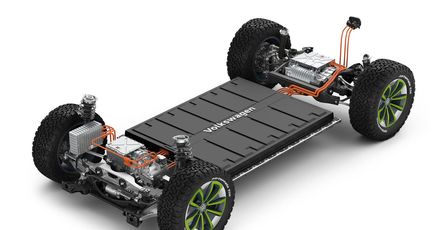
Unveiling China's Abandoned Electric Vehicles: A Closer Look at the Dark Side
- Ravinder
- EV , Automotive
- 17 May, 2023
A frightening video of a Chinese yard packed with tens of thousands of abandoned automobiles from brands like NETA and BYD recently went viral. The sight begs the issue of why these registered and ostensibly in good shape automobiles have been ignored. This blog explores the root causes of this situation, exposing the complex network of subsidies, dishonest business practises, and a dearth of sales and marketing tactics in the Chinese electric vehicle (EV) sector.
The Subsidy Game:
The Chinese government’s system of subsidies is one major factor in the high number of abandoned EVs. Chinese automakers are incentivized to increase output because they get subsidies depending on the volume of automobiles they create. Some businesses use this system to their advantage by producing an excessive number of units—even more than the market requires. Then, in order to obtain exaggerated government subsidies, they manufacture sales data and make up registrations.
Investment Oversights:
The tendency of new businesses to place a strong emphasis on manufacturing while ignoring the key components of sales and marketing is another reason that contributes to the growth of unsold EVs. These businesses increase output as a result of fresh expenditures without properly gauging consumer demand or setting up efficient distribution networks. As a result, a lot of cars sit on the market unclaimed, building up abandoned stock in auto graveyards.
The viral video serves as a stark reminder of the magnitude of the issue. It sheds light on the vast number of abandoned vehicles, raising concerns about the environmental impact, waste of resources, and financial losses incurred. Such visuals are hard to ignore, leaving observers questioning the sustainability of China’s EV industry and the actions taken by the government to address this issue.
Government Response:
Despite the attention drawn to these abandoned EVs, the Chinese government’s response has been underwhelming. Instead of taking decisive action to rectify the situation, authorities have attempted to downplay and conceal these incidents from the public eye. To counter the negative publicity, the government and car companies have resorted to releasing green schemes and sustainability initiatives as a means to divert attention and project a positive image.
The Need for Accountability and Transparency:
While the Chinese government and automobile manufacturers concentrate on minimising the harm to their reputations brought on by abandoned EVs, it is crucial to stress the significance of accountability and transparency. Resolving the underlying issues, enforcing stronger laws, and promoting ethical production methods can help rebuild trust in the Chinese EV market and guarantee its long-term viability.
Conclusion:
Many abandoned EVs may be found in China’s auto graveyards, which raises serious concerns about industry standards and regulatory control. The shadow side of China’s burgeoning EV business has been exposed by the exploitation of subsidies, a lack of sales and marketing plans, and the resultant stockpiling of unsold vehicles. Comprehensive changes, enhanced accountability, and open business practises are essential to regaining public trust and protecting the industry’s future.
FAQs
-
Why are there so many abandoned electric vehicles in China? The abundance of abandoned electric vehicles in China is primarily attributed to two factors. Firstly, companies engage in the production of excessive units to maximize subsidies provided by the government. Secondly, new companies often prioritize production over sales and marketing, resulting in unsold vehicles.
-
How do Chinese car companies manipulate the subsidy system? Chinese car companies manipulate the subsidy system by producing extra units of electric vehicles and engaging in fraudulent practices such as fake registrations and fabricated sales figures. This allows them to receive higher subsidies from the government.
-
What are the implications of the abandoned EVs on the environment? The abandoned electric vehicles in China have significant environmental implications. They contribute to resource wastage, increase pollution due to the production and disposal processes, and pose challenges in terms of recycling and sustainable practices.
-
What actions is the Chinese government taking to address this issue? Currently, the Chinese government’s response to the issue of abandoned electric vehicles has been limited. While they attempt to downplay and conceal these incidents, they focus on promoting green schemes and sustainability initiatives as a means to divert attention and maintain a positive image.
-
What can be done to prevent the accumulation of unsold EVs? To prevent the accumulation of unsold electric vehicles, it is crucial for companies to conduct thorough market research and analysis to align production with actual demand. Implementing stricter regulations, promoting transparency, and holding companies accountable for their production practices can also help mitigate this issue.
-
Are abandoned EVs a common problem in other countries as well? While abandoned EVs are predominantly observed in China, there have been isolated cases of similar issues in other countries. However, the scale and magnitude of the problem in China are notable due to the country’s rapid growth and substantial investments in the electric vehicle industry.









